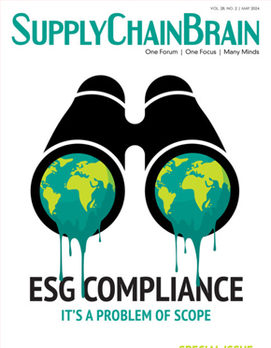
In what many are calling one of the tightest labor markets in U.S. history, few sectors are having a tougher time finding enough workers than warehousing.
From an employers’ view, it’s bad enough that unemployment across all industries has sunk to 3.7 percent, the lowest level in nearly 50 years. Add to that the historical demand for extra workers during the holiday season, along with the numbingly routine nature of the job, and you have something approaching a crisis for warehouses.
Logistics employers in general are hiring at a faster rate than other industries, notes Peter Schnorbach, senior director of product management with Manhattan Associates. (In October, the logistics sector reportedly accounted for 10 percent of U.S. job growth.) That’s hardly surprising, given the surge of e-commerce sales, with an accompanying demand for people and technology that can get orders to the buyer’s door with unprecedented speed.
In a strong economy, workers hold most of the cards. That’s especially true for warehouses, which tend to be clustered in densely populated areas. “We’ve reached the highest number of people quitting without having another job than has ever been measured,” notes Schnorbach. “Leverage is shifting dramatically from the employer to the employee.”
The obvious solution is to raise wages to the point where warehouse work becomes more attractive than the alternatives. But employers have limited leeway in that regard, at a time when logistics providers are under intense pressure to keep costs down. E-tailers offering free or below-cost shipping — an essential perk to their remaining competitive — can’t afford to absorb higher delivery rates.
Issues of money aside, warehouse operators need to become more “creative” in engaging, rewarding and retaining employees, Schnorbach believes. Certain incentives can make the job more attractive without imposing a heavy burden on the employer. Schnorbach cites worker surveys by the Warehousing Education and Research Council which found a majority of respondents preferring five days of paid time off over an extra dollar in their hourly rate — despite the latter costing the employer significantly more.
In addition, Schnorbach says, warehouse employers need to give workers more control over the shifts they work, including overtime. That’s not an easy goal to achieve, however, in an industry where labor requirements are set by external factors such as seasonal peaks and promotions. What’s more, most warehouse work is on a full-time basis, giving employers relatively little freedom to juggle schedules.
Nevertheless, warehouse operators need to find ways to make workers feel valued. Labor-management systems have historically been deployed to set productivity quotas, but they can also serve as the basis for recognizing top performers. Rewards can take non-monetary forms such as peer-recognition programs, parking spaces or even movie tickets. “It’s about how to make them feel empowered, and an important part of the operation,” says Schnorbach.
He doesn’t see quotas going away anytime soon. “You still have to be concerned about productivity,” he says. “You can’t let employees do whatever they want.” Still, employers can create a more attractive workplace by establishing a set of standard operating procedures, making expectations clear, and training workers to meet them in a consistent manner.
Having sufficient information about employee output, and communicating it throughout the workplace, is key. “You need to give them visibility into how they’re doing, so they can coach themselves,” says Schnorbach. “The problem isn’t labor — it’s what you do with the data you’re getting from labor.”
Finally, it should go without saying that employers desiring to attract and retain high-quality labor will place a strong emphasis on both safety and comfort in the workplace. Facilities located in hot climates that lack air-conditioning are likely to experience high turnover, not to mention image-killing headlines about worker mistreatment.
For many warehouse operations, the long-term solution to the labor shortage lies in automation. Already today, robots are taking over tasks once performed by humans, and doing them faster and more efficiently. But most automated systems in warehouses today are designed to work in tandem with people. Relatively few operations are contemplating the creation of “lights-out” facilities, requiring no human presence at all.
To be sure, operators are investing heavily in robots and other forms of automation within the warehouse. Yet their number-one concern today remains the challenge of finding and retaining human workers. The pace of growth in retail and e-commerce will continue to place demands on logistics providers that can’t be fully satisfied by software or machines — at least as long as the economy remains strong.






